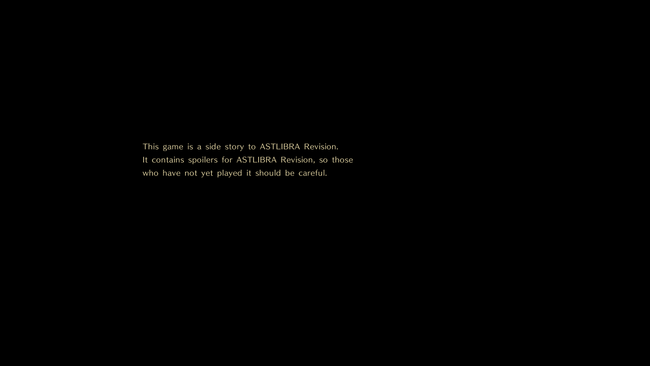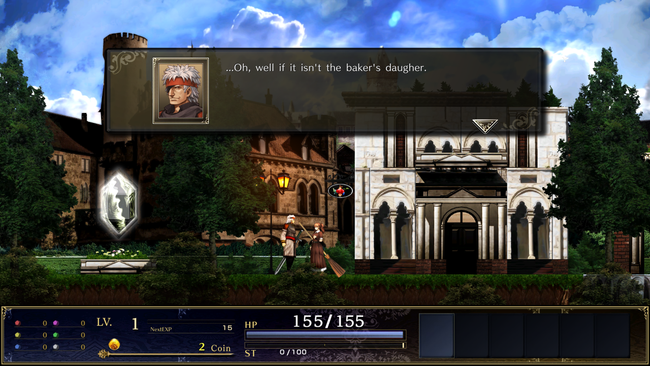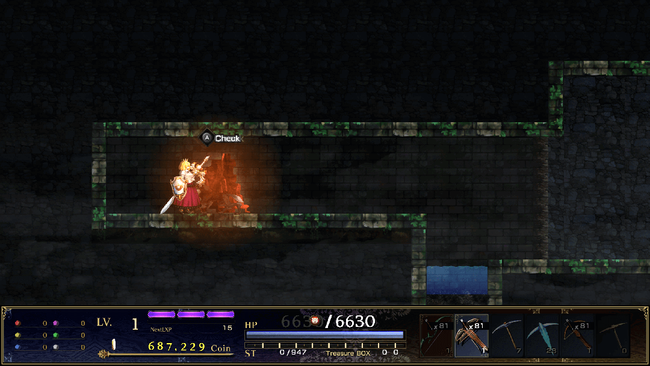
Astlibra Gaiden: Cave of Phantom Mist Review
After reviewing the original Astlibra, I eagerly anticipated new content from the developer, KEIZO. Given how long the original game was in development, I didn’t expect anything to arrive soon. However, less than a year later, my wish was granted with the spin-off DLC Astlibra Gaiden: Cave of the Phantom Mist, which was released earlier this year for PC with a Switch release set for October 17. While it might seem sudden, this title had been in the works for some time and was shared in early access state on Japanese freeware sites.
This spin-off takes place during the mid-game of the original Astlibra, so it is strongly recommended to play the main game first to avoid spoilers. Although Cave of the Phantom Mist isn’t heavily story-focused, it does include warnings about potential spoilers, particularly regarding which characters survive—this could undermine key twists from the original game.

In Cave of the Phantom Mist, you play as the nameless Baker’s Daughter, a character referenced in the original story but never seen. She is portrayed as incredibly strong, capable of holding off demons while the original protagonist is away. This spin-off explores her background and her connection with Polin, a talking wolf who later joins the main game’s party. The plot revolves around the heroes from the original Astlibra disappearing during a mission to explore the Phantom Cave, and Polin enlists your help to find the missing crew, setting the stage for this new adventure.

While the narrative takes a backseat compared to the original, Cave of the Phantom Mist truly shines in its gameplay. The game draws inspiration from the endgame loop of Astlibra, emphasizing roguelite elements through randomized dungeon crawling. A key gameplay change is that the protagonist’s level resets whenever she returns to the Cave. However, unlike the original game, Force Gems—earned by defeating enemies—are carried over when you make it back home safely. These Force Gems are essential for accessing the Grow system, where you can permanently upgrade the protagonist’s stats.
For those unfamiliar with the Grow system from the original, it functions like a vast, dungeon-like chart where each unlocked node grants an upgrade or stat boost. In Cave of the Phantom Mist, the risk-reward dynamic is heightened by the need to return home to invest your Force Gems. Players must carefully balance how far they push into the cave against the potential loss of their hard-earned resources. For those seeking a more relaxed experience, the game offers easier difficulty options that eliminate these penalties, allowing players to explore without fear of losing progress.
While the original Astlibra was known for its challenging difficulty, the bosses in Cave of the Phantom Mist are noticeably less punishing, likely due to its roguelite structure and the absence of frequent save points. Typically, you can only save at the end of a section within the cave, further emphasizing on the roguelite elements.
One notable highlight is the abundance of hidden items scattered outside the cave. These items are often well-concealed, but players familiar with the original game may already know the solutions to these puzzles immediately. The game cleverly reuses and repositions secrets in ways that reward veterans of Astlibra while still offering surprises for newcomers. For instance, the area hidden beneath the Well will only become apparent when you reach the later stages of the original game.

Even though Cave of the Phantom Mist shares many mechanics with the original game, it plays quite differently. The Baker’s Daughter can potentially be much more powerful than the original protagonist, as she has access to a unique super move based on her assigned class role. Each class offers different properties that provide distinct advantages in combat. For example, switching to a Swordsman class can reduce the weight of swords by half, allowing for faster attacks without a heavy reliance on speed stats.
The Astlibra scale also makes its return; however, UI improvements make the system easier to understand, even though it remains somewhat complex. Players must place an item on the scale, where each item has certain values and bonus effects. If you drop the same item on the opposite side of the scale, it will cancel each other out, resulting in nothing. The more balanced the values, the stronger the effects will be; if two items have different bonuses, they will stack. It’s a complicated system at first glance, but the UI improvements in the DLC help clarify it for players familiar with the original.
.png)
Moreover, the Baker’s Daughter has her own unique set of magic spells, which are significantly stronger than the protagonist’s transformation magic from the original game. This new magic can be unleashed directly, and players can more easily see the invincibility frames during combat.
There is much to say about the gameplay loop, but I find it incredibly addictive and satisfying to play. Astlibra: Cave of the Phantom Mist successfully builds upon the original's foundation while introducing new elements that enhance the overall experience, making it a must-play for returning fans.
Additionally, I appreciate the game’s self-awareness, particularly in the PC version, which features achievements that highlight some amusing elements. For instance, one achievement raises the question: why does a bedridden character have a gun for trade? While this isn't a fault of the game, it reflects a limitation of the Switch version, which lacks achievements despite performing just as well as the PC version. The game looks great on a TV monitor and retains the same graphics as the original title. However, there is less character customization compared to the original protagonist, who received a new sprite for every piece of equipment. The Baker’s Daughter is limited to her equipped weapon, but there is an option to customize her appearance if you acquire the outfit. Unfortunately, the selection is somewhat limited, which is my only disappointment with this game.
.png)
As for the soundtrack, it mirrors the original, using licensed-free music and featuring all-new tracks for the cave while recycling familiar songs for events that occur in the same locations. The music selection is still great, and the choices KEIZO has made are fantastic.
In the end, I had a fantastic time with the Astlibra: Cave of the Phantom Mist. The price tag of $9.99 is a complete steal for the amount of content it offers. However, I would only recommend this title to players who really enjoyed the original; newcomers who haven’t played the original might not find it as compelling.